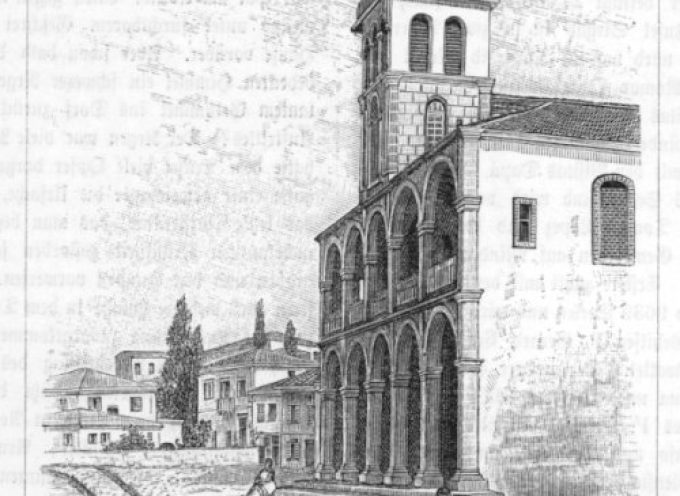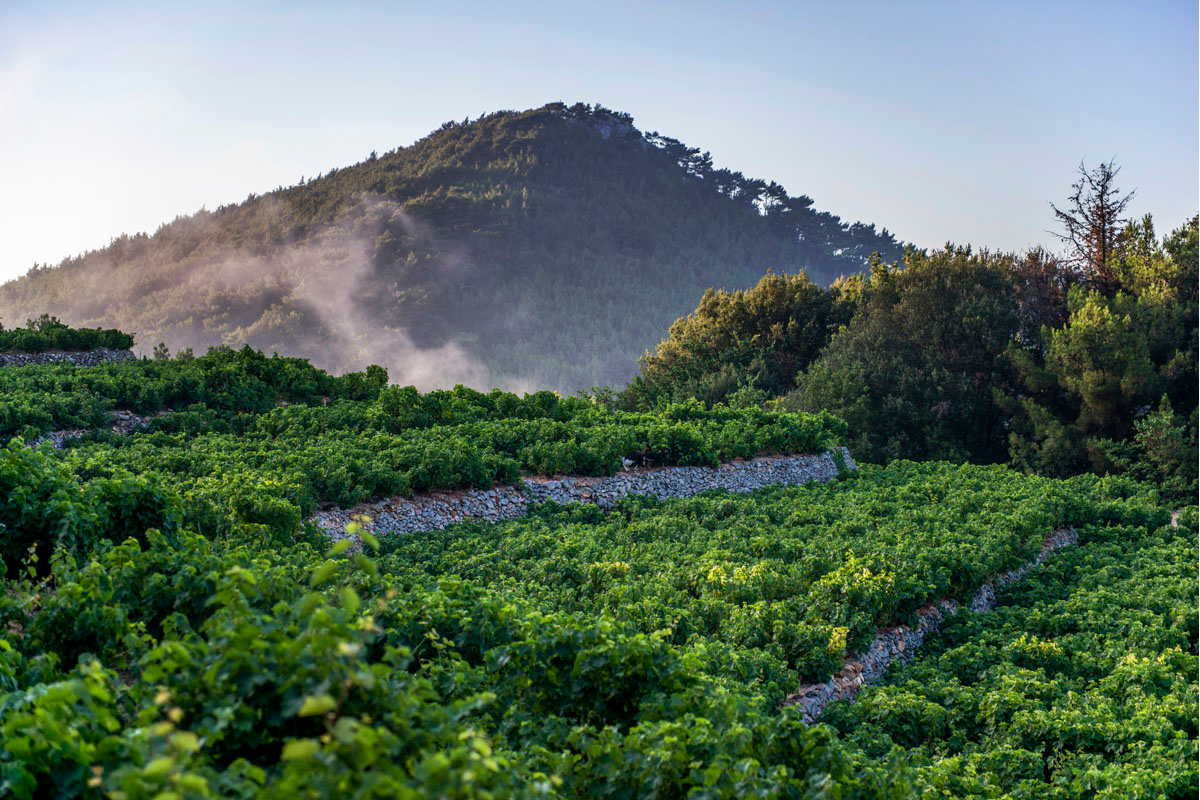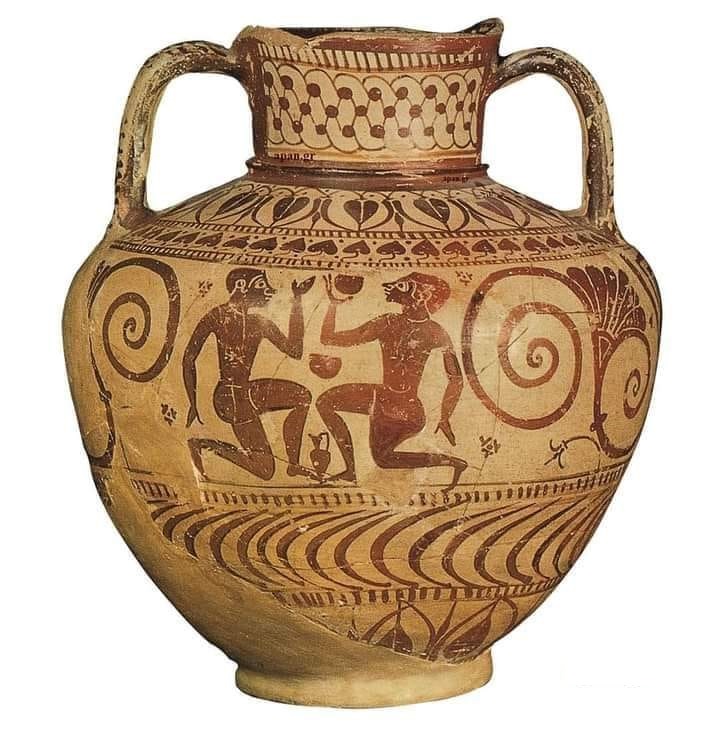The stomping place (linos) & the polymni

Stomping places on Samos were mainly family-owned and were built in the vineyards. Since the 19th century, they were constructed manually with local stones and mud, usually on the ground floor of the huts built in each vineyard of Samos. These are “tanks” where grapes were thrown after harvest. There they were crushed by family members and barefoot workers to collect the must in the “polymni” (the “hypolenion”).
In ancient times, “stepping on grapes in a stomping place” was called “linovato” and stompers were called “linovate”. Pottery painting images show that the “linovates” were facilitated in pressing the grapes by resting on a stick or holding a rope hanging over them.
The stomping place or linos is a permanent built or portable wooden tank – cistern plastered with sand (they put grated tile, sand and lime, made mud and plastered internally the sides and the bottom, to make stomping place waterproof), which is used for pressing the grapes with bare feet and extracting the must (glefkos). The permanent stomping place was made of stone or brick and mortar and had a rectangular or square shape. They were made within the floor, mainly in a rectangular or square shape, and were about one meter high. They had a sloping base and an opening to make it easy for the must to flow out. The must ran into the polymnium, which looked like a small well dug into the earth with a “porcelain” coating. Then the must was transferred to the houses with the “dermatia”.
The harvest began early in the morning, with the first light of day. They stepped on the grapes in the afternoon and in the morning, they carried the must, in “dermatia” loaded on donkeys led to the taverns by “mule-drivers”. Those who did not have their own stomping places could use their neighbours’ or relatives’.
After the establishment of the Cooperative in 1934, stomping places were gradually abandoned.
Today very few of them are still kept in family “huts”, in various locations. They have been located in Manolates, Vourliotes and Ampelos. They date from antiquity to modern times and some of them are two-roomed, with one room for stepping on the grapes and another, the hypolenium, with the necessary drainage cavity for the must.
In some cases, farmhouses have been identified near stomping places. Their archaeological and anthropological analysis shows that during harvest period, families migrated to the vineyards to be close to the production of wine.






